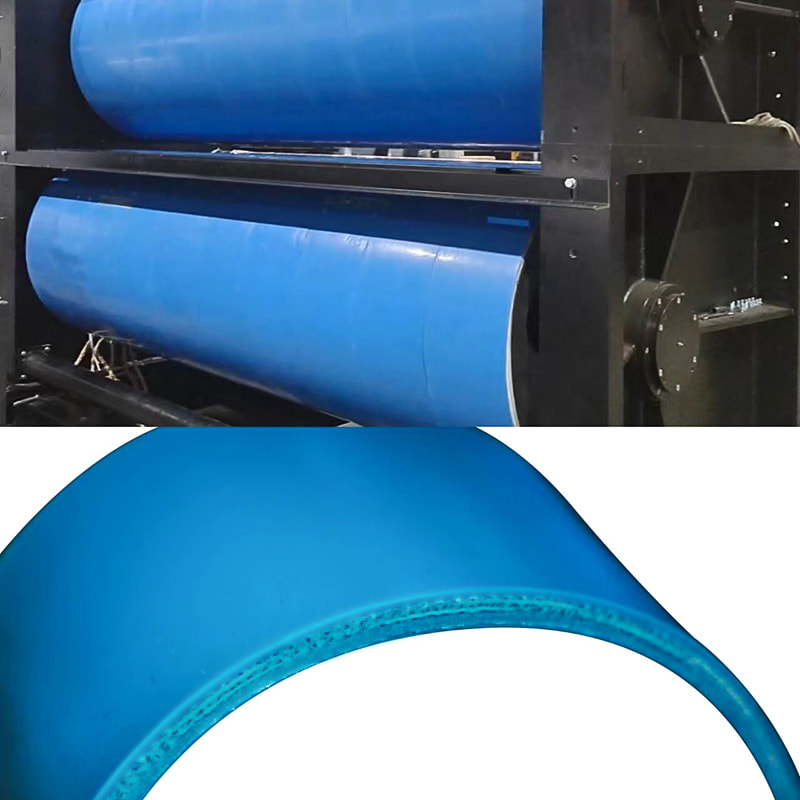In industries where efficiency and productivity are paramount, conveyor belt lines have become an indispensable tool. These systems are used in a wide range of applications, from manufacturing and mining to food processing and logistics. However, with the increased reliance on conveyor belt lines comes the critical need to ensure safety. Implementing and adhering to conveyor belt standards is not just a regulatory requirement but a fundamental aspect of protecting workers and maintaining operational integrity.

Conveyor belt lines are complex systems that involve moving parts, heavy loads, and often high - speed operations. The potential for accidents and injuries is significant, making conveyor belt safety a top priority for any industrial facility. According to numerous studies and reports, a significant number of workplace accidents are related to conveyor belt operations. These accidents can range from minor injuries to severe, life - threatening incidents. Therefore, it is crucial to implement comprehensive safety measures and adhere to established conveyor belt standards.
One of the primary aspects of ensuring conveyor belt safety is the proper design and installation of the conveyor belt line. This includes selecting the right type of conveyor belt for the specific application, ensuring that it is properly tensioned, and that all components are securely fastened. Conveyor belt standards provide detailed guidelines on these aspects, ensuring that the system is designed to operate safely and efficiently.
Regular maintenance is another critical component of conveyor belt safety. Conveyor belt lines should be inspected regularly for signs of wear and tear, such as frayed edges, cracks, or loose components. Adhering to conveyor belt standards ensures that maintenance is performed at appropriate intervals and that all necessary checks are carried out. This not only helps to prevent accidents but also extends the lifespan of the conveyor belt line, reducing the need for costly repairs and replacements.
Training is also a vital aspect of conveyor belt safety. Workers who operate and maintain conveyor belt lines must be thoroughly trained in the proper procedures and safety protocols. This includes understanding how to safely start and stop the conveyor, how to identify potential hazards, and what to do in case of an emergency. Conveyor belt standards often include specific requirements for training programs, ensuring that all personnel are adequately prepared to handle the equipment safely.
In addition to design, maintenance, and training, the implementation of safety devices is essential for ensuring conveyor belt safety. Conveyor belt lines should be equipped with emergency stop buttons, guards to prevent accidental contact with moving parts, and sensors to detect any irregularities in the system. These safety devices are designed to prevent accidents and protect workers in the event of a malfunction. Adhering to conveyor belt standards ensures that these devices are installed correctly and function as intended.
Another important aspect of conveyor belt safety is the proper handling of materials. Conveyor belt lines are designed to transport specific types of materials, and overloading or using them for unintended purposes can cause accidents and equipment failure. Conveyor belt standards provide guidelines on the appropriate use of conveyor belt lines, ensuring that they are used within their designed capacity and for their intended purpose.
Furthermore, the use of personal protective equipment (PPE) is crucial for workers operating and maintaining conveyor belt lines. This includes items such as safety glasses, gloves, and ear protection. Conveyor belt standards often specify the types of PPE that should be used and when they should be worn. Ensuring that workers are properly equipped helps to minimize the risk of injury and enhances overall safety.
Ensuring safety with conveyor belt line standards is a multifaceted process that involves proper design, regular maintenance, comprehensive training, the implementation of safety devices, appropriate material handling, and the use of personal protective equipment. Adhering to conveyor belt standards is not just a regulatory requirement but a fundamental aspect of protecting workers and maintaining operational integrity. By following these standards, industrial facilities can significantly reduce the risk of accidents and injuries, creating a safer and more efficient working environment. As industries continue to rely on conveyor belt lines for their operations, the importance of conveyor belt safety and adherence to standards cannot be overstated.

 English
English  Español
Español  Português
Português  عربى
عربى 




